Interview with Kieran O’Hea Publisher of Digitigm.com and Originator of Digital Capability Framework
© Frank Hughes -originally posted in pivotdublin blog 2011
What is the Digital Capability Framework you are currently developing and how will it benefit us in Ireland?
The digital economy has exposed companies to a plethora of internal and external facing challenges created by higher customer experience expectations across any combination of web, mobile and social media channels to name but a few. This new world of digital transformation will affect not just most businesses but it will affect their competitiveness. Just recently, Bob McDonald, CEO of Proctor & Gamble said: “I want P&G to be the most technology enabled company in the world.We want to be the first company that digitizes from end to end.” No small ask, especially for those who job is to realise his aspiration.
The Digital Capability Framework contributes to this process by helping organisations to measure and improve their digital capability on an enterprise-wide basis. It helps them to align their people, processes and technology in order to meet the challenges of the digital economy. Ultimately, it helps them to decide how much digital transformation is appropriate for their business – focusing at all times on the business value it will add.
The idea for the Digital Capability Frameworks stems from years doing online strategies for significant “non-digital” organisations including Tourism Ireland and Concern Worldwide. I noticed several re-occurring trends which were sector independent.
One, companies were not taking full advantage of the digital opportunity, and even now in 2011 only one in four Irish companies that has broadband is doing business online.
Two, chief executives had a tendency to have digital aspirations based on what competitors were doing or what experts were saying even though their organisations didn’t have the resources or the know-how to implement them. Three, there were no qualified advisers around to tell them what to do. Digital agencies were happy dealing with marketing departments and didn’t want to engage with decision makers higher up the corporate food chain while many trusted sources that the CEO’s went to gave them either partial or inaccurate information. I knew that a specialised consultancy service was needed but didn’t know how to scale it up to a proper business.
After evaluating several delivery formats, I was given the opportunity to collaborate with the Innovation Value Institute, co-founded by Intel and the National University ofIreland in Maynooth. I developed a prototype version of the digital capability framework which is now under consideration by the European Commission and I have just presented it at the Digital Agenda Assembly in Brussels where it was very well received. Feedback from the Commission indicates that it is in their plans to possibly fund a project based on the Digital Capability Framework. I ran a Digital Capability assessment for DAA participants at https://www.surveymonkey.com/s/digitalcapability
The results of this survey were presented at the event in Brussels and the feedback will be used to develop a lite version of the Digital Capability assessment for SME’s and a full version of the Digital Capability Framework for large companies
The Irish context of this question is dealt with in question 2 below.
What is a Digital Ecosystem and how does it work?
In the Irish context the Digital Capability Framework will contribute to the development of a Digital Ecosystem initially by increasing the digital capability of large, traditional organisations. Each large company that undergoes some form of digital transformation is likely to need to hire a small internal digital team, perhaps 5 to 10 people per company. The increasing digital activity in the larger companies will inspire suppliers including SME’s to upgrade their own digital capability with smaller amounts of hiring occurring, perhaps 1 to 3 people. So I would see the potential for thousands of jobs being created as a vibrant digital eco-system emerges.
SME’s are typically not early technology adopters but traditionally follow in the footsteps of their larger customers. At the same time digital specialists such as web developers and broadband companies will experience an increased demand for their services due to large companies increasing their digital requirements, about 50% of which may be outsourced. By the time training companies, HR agencies and colleges step into provide the resulting skills needs, a thriving digital eco-system is going to be in place. The public sector should play its part in this by undergoing a certain amount of digital transformation as part of the planned programme for public sector reform.
Support of the digital ecosystem needs to be enshrined in a robust and proactive digital agenda. This should recognise that the impact of a digital ecosystem will not only boost the local economy but will raise the collective digital competency of the entire country, making Ireland an attractive location for foreign direct investment (FDI) from the international digital technology sector. This will provide an attraction that goes beyond low corporate taxation rates and will include working and living considerations. Unfortunately, due to what can only be described as indifference, there is a black hole in the ecosystem where a robust digital agenda, active e-government, digital champions at Government level and joined-up-thinking at policy level should be.
The Irish creative industries and cultural sector can add a creative and intellectual layer around the ecosystem providing opportunities for local content creators and artists to benefit from the ecosystem environment, including legal, copyright and technical assistance and potential access to international markets.
The appropriate state agencies such as the IDA need to include the digital ecosystem as a major part of their promotional activities. The resulting benefit to Ireland can be pole position in a global digital sector where a plethora of digital devices create an insatiable demand for digital content and services. Software itself is becoming increasingly digitised, hosted and downloaded. I believe the digital sector will eventually become bigger than the software sector, an inspiring reminder that Ireland was once the biggest software exporter in the world.
What is your own creative process and who has been a major influence on the way you think?
My creative process is to start by seeing the end point of a project, like something projected onto a wall which is always there to guide me, then going back to the start and dragging everyone along with me on the journey until the end point is subsequently reached. Sometimes others see it quickly (“they get it”) while others never really see it (“the cynics”) but as stakeholders you have to get them all over the line somehow. This is more challenging when you are trying to create something new like the first DVD-ROM in Europe or when you are trying to effect change, like do a digital transformation across an organisation for the first time.
My creative influences are many and I would almost say subliminal. Influences include managers and clients who have trusted me to get on with it. Leaders are also influences, such as Michael Collins, because much of what I do manifests itself in a desire to do something for Ireland and for years I have harboured a secret desire to be the digital Michael Collins! Groucho Marx inspires me because of his famous quote that he would never join any club that would have him as a member. This is the reason I don’t play golf and am not an accountant. I use his quote as a daily mantra, a sort of checkpoint for individualist thinking. Finally there is Mary Shelley, for writing the part in Frankenstein where the villagers go to Frankenstein’s castle with their pikes and their staffs, a frightened assembly of narrow-minded people, clinging to what they know as they try feebly to resist what constitutes change. That could describe many situations I encounter even today whenever I try to introduce a new idea.
I believe artists are rigorous early adopters of new technology and this was found out to be the case in a European project I managed some years ago. They often can’t afford to develop this important role because arts councils don’t generally fund technology developments and most clients of digital agencies won’t pay for this kind of experimentation. Yet I have seen companies like Hitachi learn more about their products from artists than they have from customer focus groups. Some years ago I did manage to get some funding from the European Commission for a project called RADICAL (Research Agendas Developed in Creative Arts Labs – the acronym came first, then the title). The funding was used to give artists time to experiment with and adapt technology and when needed get help from professional technology developers. Artists could and should be doing much more of this type of intellectual work but it has never really become a natural fit with mainstream businesses that don’t recognise its value and won’t pay for it. As I always say “companies think nothing of putting art in the boardroom but they would never invite an artist to a board meeting”.
What is the guiding passion which has informed your career path?
I have always been involved in pioneering different media technologies because it’s been a great way to mix my interests in creativity and technology. It explains why I’ve been in digital media for 15 years. I was working with video before consumer VHS became established and was producing DVD’s before Xtravision even stocked them. While still at school, I was a video operator at the Cork Film Festival and showed Alan Parker how to use a video player – he had some clips of Midnight Express but didn’t know how to use the player! I also worked in TV production in London with the now defunct TV-AM and also in cable television here. I helped create the first Apple Mac based desktop publishing agency in the country and managed the development of the Ireland’s biggest website network, for Tourism Ireland. I was a co-founder of Ireland’s first DVD authoring company DV4 which is still going strong (the origin of the name DV4 has become something of a trivial pursuit question). At DV4 I was the Executive Producer of the first DVD-ROM in Europe which I still have a copy of. At the time there were only four in the world and we tested it by running into computer shops and sticking it in the DVD drives to see what would happen. Once I managed to crash all the screen displays in the shop! I also managed some of the early European web projects for the European Commission and believe it or not we were talking about user generated content in 1997, years before Google, Facebook and YouTube came along. Having “traversed the digital paradigm” since 1993, nothing seems to surprise me anymore. It’s a great world of possibilities but my motto would probably be “more strategy, less gadgetry”.
from Hackers film 1995
How realistic is the Smart Economy ambition for Ireland and what needs to be done to implement it?
Somebody (I think it was Chris Horn in his blog) handily characterised the smart economy as a focus on high quality education system; publicly funded scientific research; attractive corporate fiscal incentives including tax breaks; and great infrastructure including high quality domestic and international connections, pervasive broadband, and excellent public services including in particular health care. No disrespect to Chris who I have great respect for and who was only summarising but I think we need to redefine our definition of highly skilled jobs to attract more intellectual investments here. Many companies are effectively call centres and there’s no strategic decision making done here. The more a company embeds intellectual development and idea generation here, the deeper the roots it will put down. We have to offer companies more than a low corporate tax rate – initiatives like the digital ecosystem I propose elsewhere in this document may help to do that. Broadband is a red herring unless a company is involved in a very bandwidth intensive business like games development. The fact is three-quarters of Irish companies who have broadband don’t seem to use it properly and probably need help to do so. I do agree with Chris about healthcare but for the reasons described below.
We are getting to the point where we have enough broadband, what we need is training for companies in how to use it to do more business online and become more competitive in the Smart Economy. I covered this previously when talking about the Digital Capability Framework. The reason this probably won’t happen and why digital probably won’t play an important part in the Smart Economy is because Ireland has no digital strategy.There’s a black hole in Government where it should be. As far as digital is concerned, there is no evidence that the Government “gets it”. Leading by example is essential, so e-Government can play a part in a thriving digital eco-system. Some e-Government systems are excellent such as www.revenue.ie and www.motortax.ie. But the quality of Government websites themselves needs improvement. The recent change of Government on http://www.taoiseach.gov.ie/eng/ involved fuzzy photos of Brian Cowen being replaced by fuzzy photos of Enda Kenny. I have proposed introducing a weighting system where expenditure on Government Department websites is directly proportional to that sites impact on jobs, FDI or the economy. At the moment they all seem to have cost the same, been sourced separately and are of a similarly low standard. I would also weight Government agency website expenditure on their importance to Brand Ireland. I had a budget of several million to spend on Tourism Ireland’s website and it looked better in 2004 than Bord Bia’s website does now even though Irish food is powerfully emotive and must be almost as evocative of Ireland in foreign markets as tourism is.
Putting e-Goment avernside, Ireland need’s a national digital strategy which is robust and engaging. It must also be understood and practiced across Government. It also needs to take account of opportunities in Europe and internationally. This will require digital champions in Government, maybe even a Chief Digital Officer. It will mean amalgamating digital efforts across the Dept. Of Communications which only supports the national agenda and the Dept. Of Enterprise which only supports the European agenda. The Digital Capability Framework has national and European aspects and if it wasn’t for the European Commission seeing it’s potential, it would have fallen without trace between two departmental stools in Ireland. We need to know more about the role of the Digital Hub and the National Digital Research Centre in creating a robust and sustainable Digital Agenda for Ireland. In fact, in a ubiquitous and distributed smart economy such as the one we allegedly participate in, there appears to be a certain irony in the words “National” and “Digital” appearing alongside one another.
I’ve been through the Information Society, the Knowledge Economy and now the Smart Economy. I don’t believe Ireland sits comfortably in any of these. Over the last few years we haven’t proved ourselves to be very informed, very knowledgeable or very smart. Perhaps a Smart Economy is one that hurts, as in “that smarts” in which case the economy is certainly smarting now. My preference would be for an Emotional Economy, failing that an Intellectual Economy or a Creative Economy. There is a lot to be said for investing in our intellectual infrastructure, built upon strong pillars of innovation, education and creativity. There is also a lot to be said for developing an Emotional Economy harnessing the emotional engagement that people around the world experience with our art, our culture, our sport, our tourism, our food and our people. There are a lot of countries out there who envy us and even people who want to be us. And none of them cares if we have a Smart Economy as long as we have Blooms Day and the like.
At the same time, there’s a lot to be said for Smart Government, not smart just in terms of effective public sector transformation including e-Government but smart in the sense of being an elegant inspiring global advert for our country. Like an online version of President Mary McAleese with the benefit of 24/7 global exposure. Would an Innovation Economy make us global innovators? I doubt it because much as we hold Finland and Israel in high-regard in this respect we will never become global innovators in exactly the same way that they have. We can become acknowledged as global innovators if we identify a crucial indigenous need and solve it. We should therefore create a world class health system in Ireland, improve the lives of our people as a result, even save some lives in the process, then export this knowledge. For Ireland and the Smart Economy, it’s not just a question of going back to the drawing board – we’ve done that too often before. What we actually need now is a new drawing board. The World Design Capital Designation is the new drawing board.
How can initiatives like Your Country Your Call be better harnessed to convert more entrepreneurial ideas into creative businesses here?
While not citing YCYC specifically, in general the Government needs to see these initiatives through to completion and honour their commitment. Specifically in relation to the winner of YCYC (the International Content Service Centre which I am a contributor to), I hope the level of administration involved in implementing it doesn’t end up strangling it at birth. In relation to the amount of money spent on making submissions to these types of initiatives, more projects should be funded. When I ran evaluation teams for the European Commission, we would typically get 250 proposals and fund 25, a 10:1 ratio.
The proposals probably cost €7.5m in total to submit and we probably gave the 25 successful proposals about €50m total funding (although most were matched funding). We knew how to plan the process in order to get quality bids while providing reasonable odds for the bidders. Initiatives like Your Country Your Call seem intended to temporarily capture the country’s imagination and attract thousands of submissions, all except two these being destined for failure.
Over the last couple of years we’ve had a number of initiatives aimed at encouraging ideas. Aileen O’Toole’s Ideas Campaign got 5000 submissions and I followed it up to a point where one tourism idea was supposed to be implemented by Government but I don’t know if it was. If that was the case then the ratio of submission to implementation was 5000:1. Then there was Farmleigh which again caught the imagination and got some good ideas off the ground but I’m not sure where they are now, Gateway Ireland being one that comes to mind. What I wanted to know was how many jobs were created as a direct result of the Farmleigh think-in. I sent a question to the Department of Foreign Affairs who hosted the event but they couldn’t confirm that even one job was created.
While not strictly in the same category as an ideas competition, there is also some confusion as to whom if anyone is implementing the recommendations of the Innovation Taskforce. Committed members like Chris Horn continued to champion the report after it was submitted but the Government itself didn’t seem too keen to take responsibility for implementing the recommendations. This led to unfair situations where Chris and some of his co-authors are assumed by the public to be responsible for implementing it with no real power to do so. Since the change of Government, I am not sure if funding is continuing.
Which leaves Your Country Your Call, which had 9,000 entries and picked two winners, which I believe are now collaborating, which if they were to go even further and officially merge would in effect mean a 9000:1 ratio of entries to winners in YCYC. In summary, in all these cases, more projects need to be funded and the Government should honour its commitments and see things through to the end. Re-assessment by government of the first 200 entries to these entrepreneurial initiatives would likely generate many indigenous jobs.
How do you think the Design Community in Ireland might become more relevant in policy making on the future of the country?
In order to fix Ireland, we must design the future and whatever people say about the importance of FDI and low corporate tax rate, a sustainable long term successful future can only be designed from the inside out, and indigenous business is key whether that’s large traditional employers who’ve got left behind in the tech race but will eventually catch up or the creative forces that are driving the Emotional Economy. Our design community needs to take confidence from this. We must also realise that while we have unique and challenging problems, we are also unique.
We should stop aspiring to be like Finland and New York and accept that we ourselves are the envy of many. Either way it means going back to the drawing board and who better to do that than designers – they can even design a new drawing board if necessary! In a world of conformity, creativity adds value to competence – so either way there’s a place at the top table for the creative community. It has also been acknowledged that competitiveness must be built around something that we know exists but which is seldom articulated in the business world: emotions and imagination.
Of course it would be easier to achieve this if there were more recognition for the Emotional Economy. Engagement with the creative industries– for example with advertising and the arts– is always an emotional one. Yet these sectors are expected to conform to conventional economic models that have been designed to generate growth from financial transactions rather than emotional ones. We’ve got to get this argument onto the policy table and as someone who has helped creative communities do this, I’ve always believed that if you want to sell somebody an idea, especially one that’s original or intangible, you’ve got to make them comfortable with your idea in their environment and not make them cross over into yours.
I’ve seen designers and artists lose work by not making themselves accessible to clients and by not being willing to compromise on design styles. At the same time I think designers and artists are naturally articulate communicators but are not acknowledged for this because they communicate primarily through media rather than through written or spoken words. So if you add one and one above and you give an artist or a designer a chance to be articulate in the client’s environment then I see no reason why designers and artists cannot compete with the best in terms of contributing to policy development. I have seen examples of this before including the RADICAL consortium and the European Cultural Backbone, both of whom who produced documents which were articulate enough and impactful enough to bring them credibility at a European level and ultimately get them funding.
As I’ve said before, a company has no problem hanging art on the boardroom wall but would never invite an artist to a board meeting. That may not always be the company’s fault – designers and artists need to prove they are worthy of a place at the boardroom (or policy making table) by presenting themselves in a way that the client is comfortable with, preparing an articulate position paper and delivering it to its target audience in the most compelling way. There’s an example of such a paper at this link:
http://www.scribd.com/doc/27894671/Creativity-and-the-Framework-Research-Programme
If you were asked to put together a dream team to work together on a digital technology project what characteristics would you look for and how might you approach it?
I would need at least one champion at Senior Management Team level to send encouraging messages down the corporate food chain and sign off the budget. I would need to build an internal full-time digital team to stay behind after the project was delivered. This is in order to make sure knowledge builds up in the company. I would need the best development team in the world for the sector I was working in. If you want to be the best, find the company that has developed the best sites or campaigns in the world and hire them. I would need the best experts in user experience design and Search Engine Optimisation (SEO) to make sure that the internal team got the training they needed to keep the sites performing and evolving after the developers left. I would like to develop the site on an open source platform and hire an open source developer to build subsequent sites. I would do this in order to provide autonomy and not have to go running back to the external web company every time something small needed to be done. I would like this project to be acknowledged as the best in its sector, to win awards, provide the best user experience, increase traffic many times over and be regarded as exemplary of best practice by its peers. Just like all the ones I have actually worked on!
With the exception of the Peace Process, Ireland does not seem to have a long track record of delivering ‘Big Projects’. Typical reasons cited here for this are;
• Risk adverse
• Venture Capital regime
• IP regime – no sharing
• Silos mentality / territoriality / design of public services / fear
What is your opinion ?
The factors listed above are not showstoppers of a really “Big Project”. They are sometimes allowed to derail or delay various types of project and if I was given the chance to implement my ideal project – a Digital Agenda for Ireland – I would expect to encounter some or all of them. But that’s not a really “Big Project” –it’s not going to change lives. I think that “Big Projects” and what drives them does come down to changing lives, sometimes even saving lives. It comes down to indigenous need and some projects are big because they cannot fail, because their successful delivery means fundamental changes to so many people’s lives. The Peace Process qualified for this reason, but it doesn’t for example apply to the IFSC which was a big, successful project but hardly life changing. If we did for example decide that healthcare was a matter of critical indigenous importance (which we should in my opinion) and developing a world-class health service became our new Peace Process it would have potentially greater significance in the long run and might also eclipse what the Peace Process has done for our reputation abroad. It could ultimately lead to the coveted accolade of “Ireland –Global Innovator”.
I have reproduced below from Wikipedia a few paragraphs about the Ardnacrusha power plant, another “Big Project” which happened when the country was trying to get on its feet as a new state, and had relatively little money but still backed this project. It became world renowned and made us a global innovator, harnessing the power of the entire Shannon. At the time, it was the largest hydroelectric station in the world, until surpassed by the Hoover Dam.
“In 1924-25 the new Irish Free State’s Minister for Industry and Commerce Patrick McGilligan commissioned the engineer Dr. Thomas McLoughlin to submit proposals. Dr McLoughlin had started working for Siemens-Schuckert, a large German engineering firm, in late 1922, and produced a scheme that would cost £5.2m. This caused considerable political controversy as the new state’s entire budget in 1925 was £25m, but it was accepted. The Siemens report drew on earlier hydrological work of John Chaloner-Smith an engineer with the Commissioners of Public Works.The Shannon Scheme was officially opened at Parteen Weir on 22 July 1929. One of the largest engineering projects of its day, it was successfully executed by Siemens to harness the Shannon River. It subsequently served as a model for large-scale electrification projects worldwide. Operated by the Electricity Supply Board of Ireland, it had an immediate impact on the social, economic and industrial development of Ireland and continues to supply significant power in the 21st century.”
LINKS

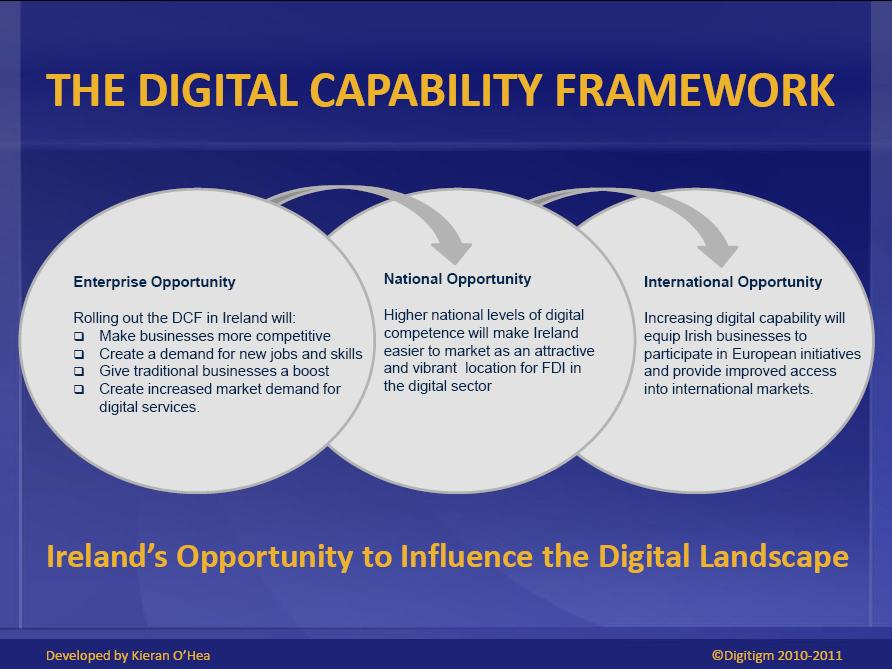
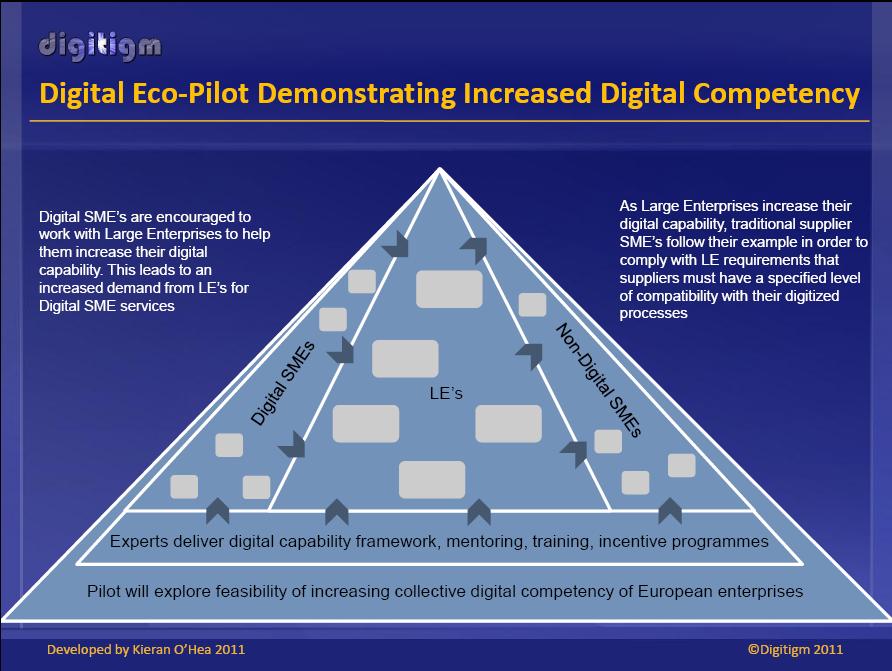

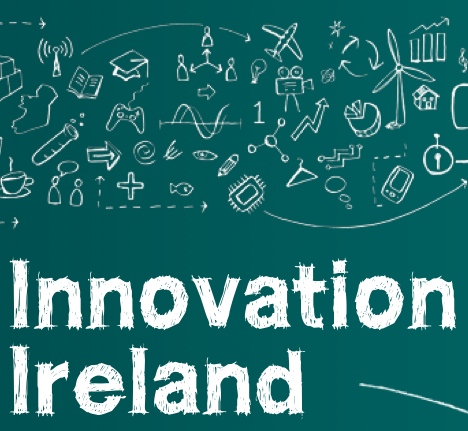

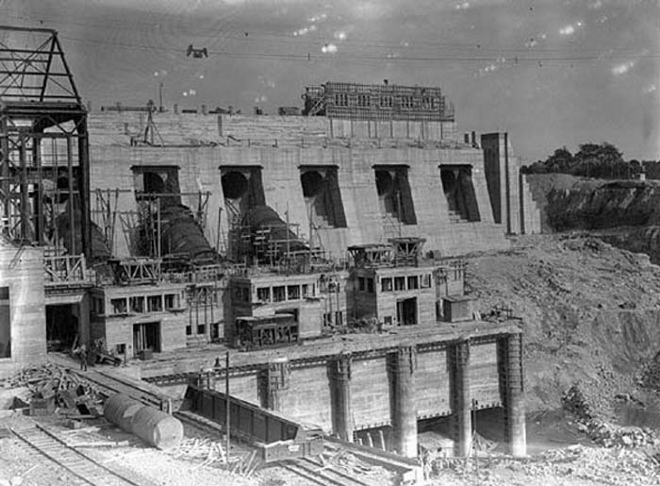



























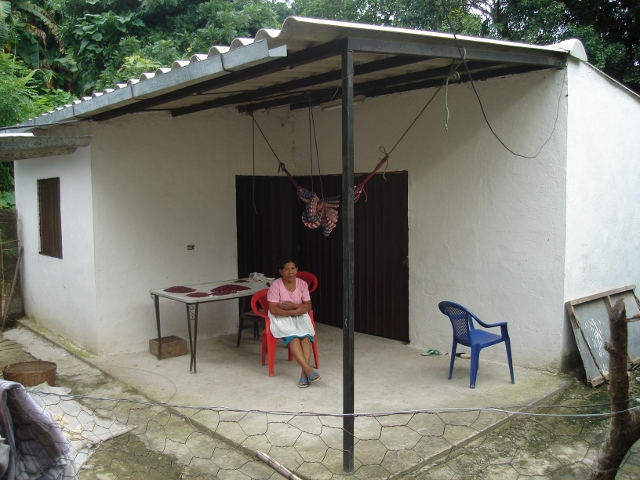

 I’m the founder of Púca. Before that I was involved in web development: I set up the Irish web design company Webfactory in 1994, which I think was the first dedicated web development company in Ireland. Before that I worked in the music industry, at EMI records in London. I’m driven by trying to do things that are original and a bit ahead of the curve. I like to be working with something that’s on the cutting edge but it can also be a good business strategy to be positioned early on in a sector that is going to grow. I think its also important if you’re operating out of a small country and a small market like Ireland that you look outwards and create something that can be sold internationally. I think what probably inspired me originally was seeing how people like U2 and their management organization have been able to build a successful international business based out of Ireland built upon innovation and creative talent. There have been many other similar accomplishments in areas like film, dance and theatre so I think those of us working in other industries in Ireland, be it the technology sector or whatever, should be inspired by those people working successfully in the arts and try and emulate them in our own fields.
I’m the founder of Púca. Before that I was involved in web development: I set up the Irish web design company Webfactory in 1994, which I think was the first dedicated web development company in Ireland. Before that I worked in the music industry, at EMI records in London. I’m driven by trying to do things that are original and a bit ahead of the curve. I like to be working with something that’s on the cutting edge but it can also be a good business strategy to be positioned early on in a sector that is going to grow. I think its also important if you’re operating out of a small country and a small market like Ireland that you look outwards and create something that can be sold internationally. I think what probably inspired me originally was seeing how people like U2 and their management organization have been able to build a successful international business based out of Ireland built upon innovation and creative talent. There have been many other similar accomplishments in areas like film, dance and theatre so I think those of us working in other industries in Ireland, be it the technology sector or whatever, should be inspired by those people working successfully in the arts and try and emulate them in our own fields.
